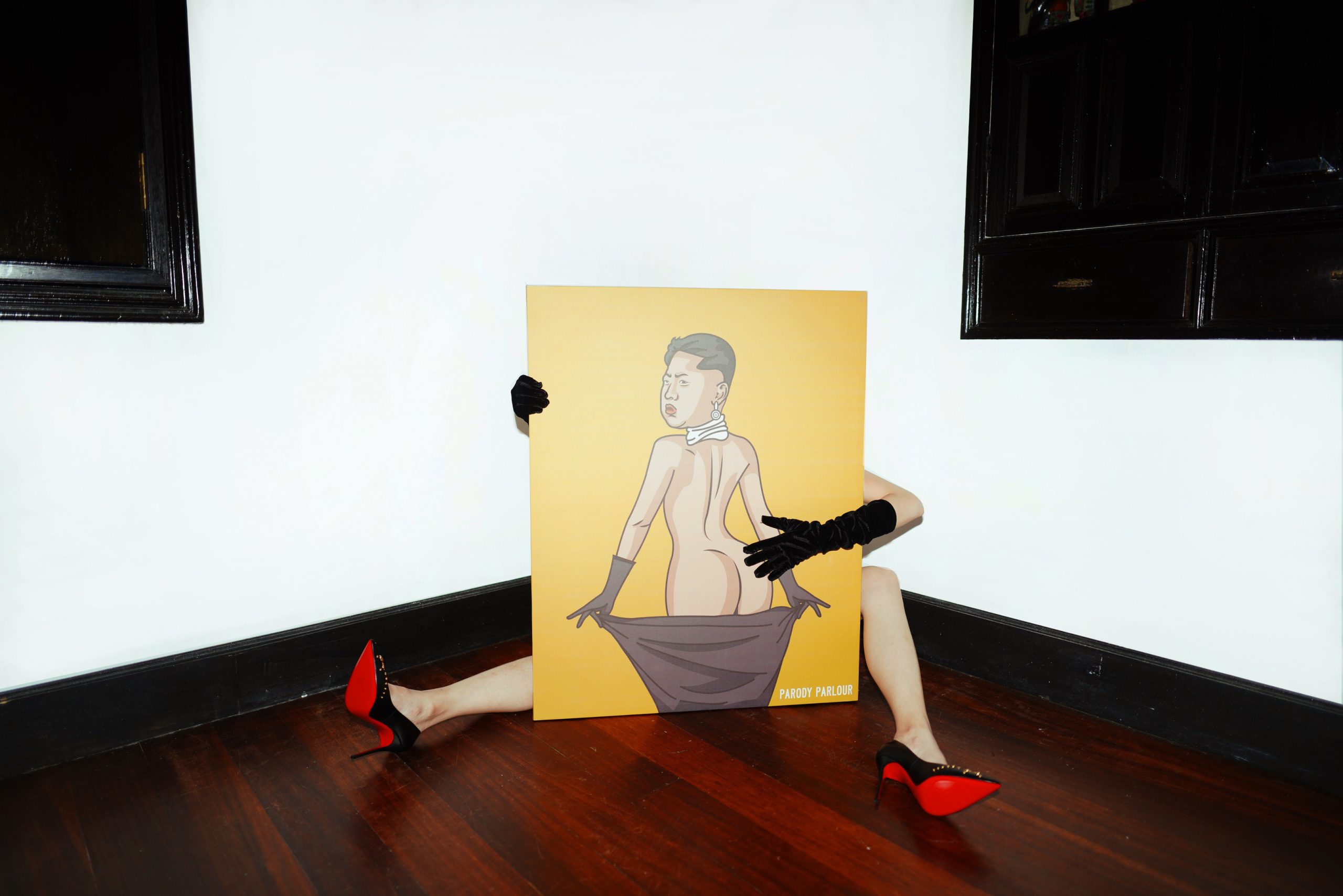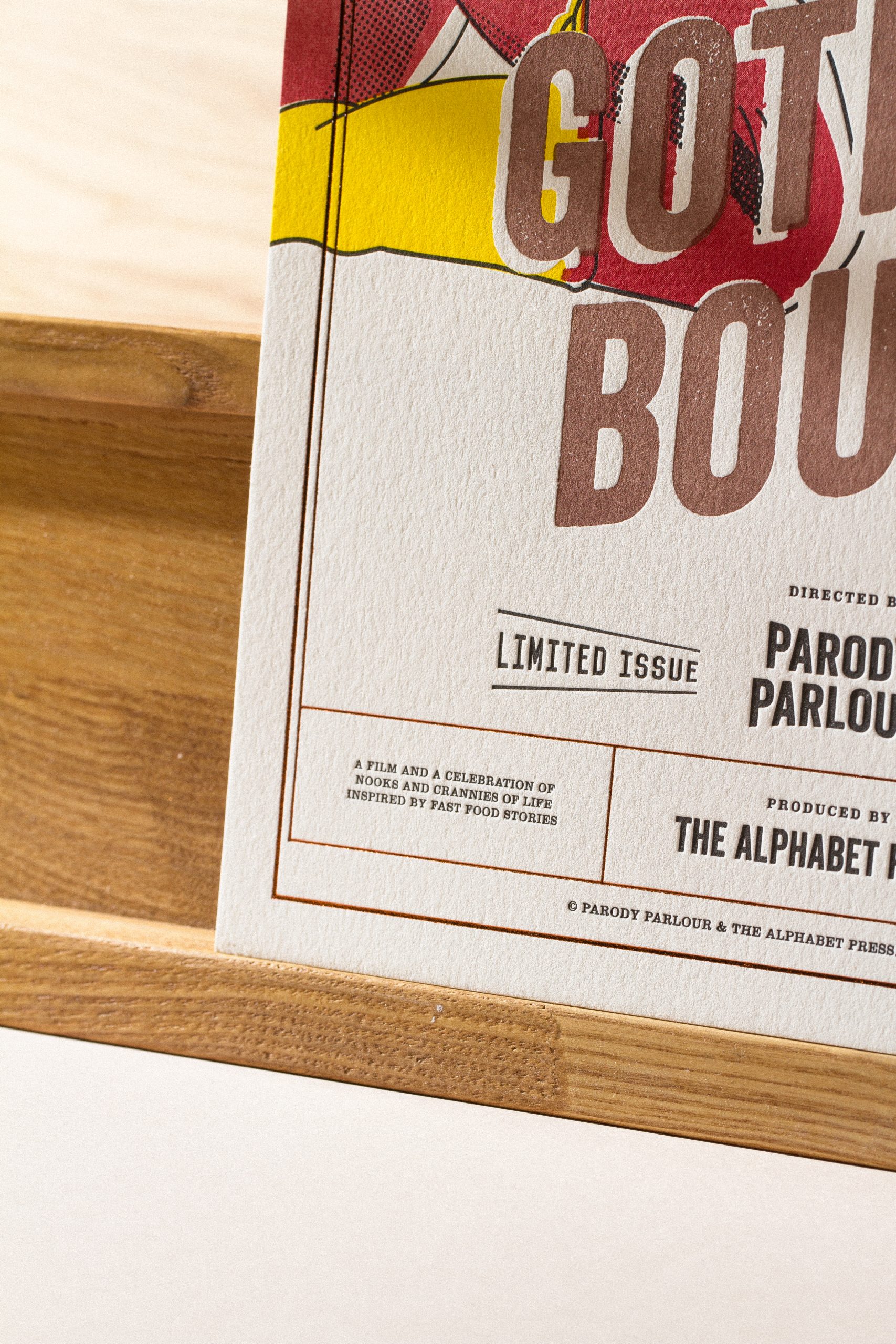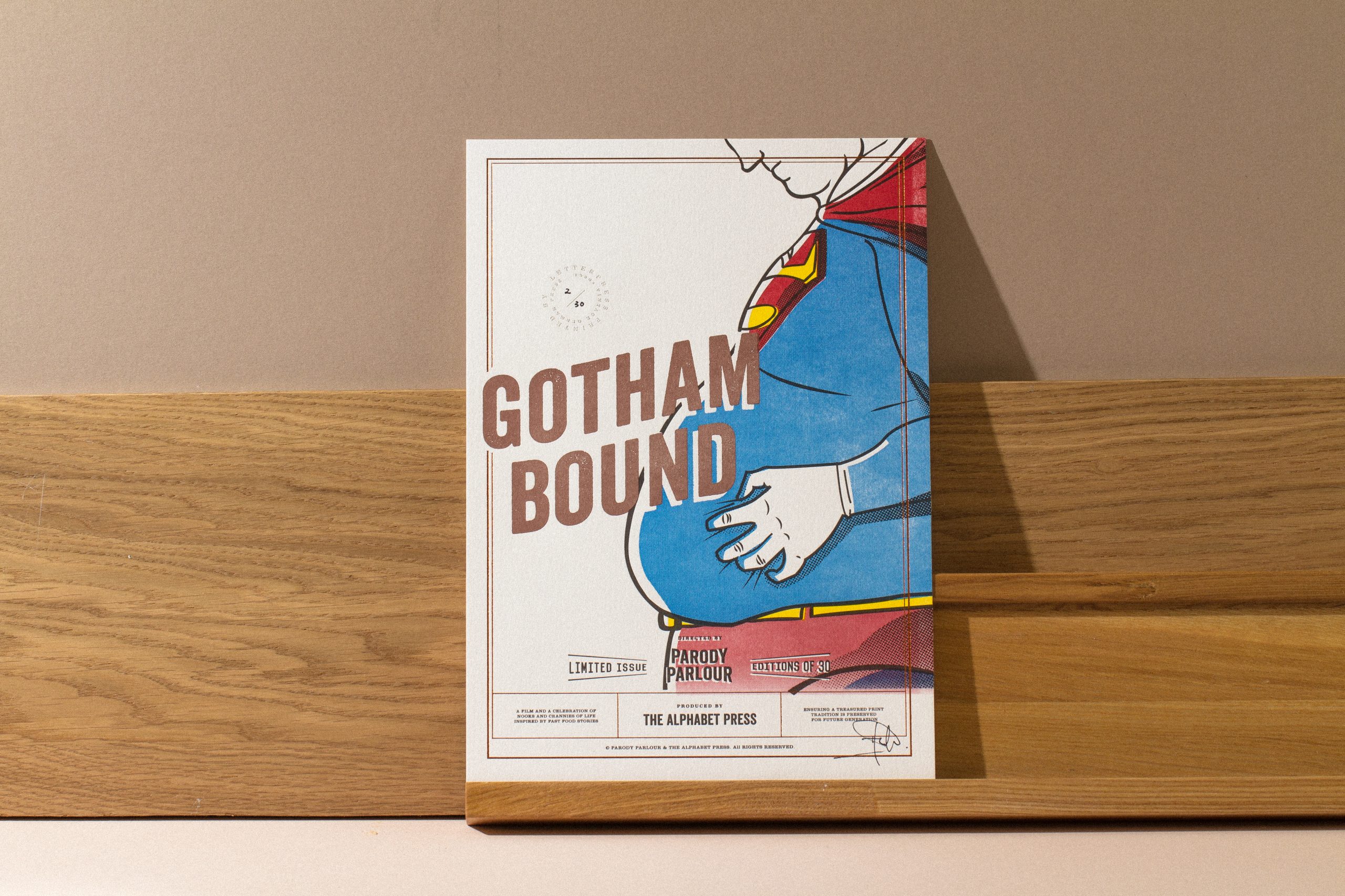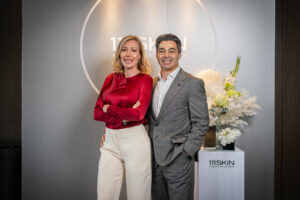Traditional letterpress meets satirical pop art in the new limited edition Gotham Bound collaboration between Parody Parlour and The Alphabet Press.

We’re about halfway through 2020 and so far we’ve experienced a global pandemic, economic recession, and worldwide protests against police brutality and racism. No matter where you are, the world seems to feel just a little more bleak as the days go by. It’s evident that now more than ever, we need a little pick-me-up as we continue braving through our reality.
That’s where Parody Parlour steps in, with its satirical pop art prints that gel together the dark humour of society with eye-catching designs. Its inception goes back to founder Jahow See’s hobby of watching movies and TV shows of every genre – from superhero blockbusters and cartoons to thrillers and horror flicks.

“I felt art was the only way I could express my silly thoughts accurately.”
“I always have this thought when I watch these movies – some silly scenes that will pop up in my head and they just won’t go away,” explains Jahow over our Zoom interview. “They’re kind of like ‘what if’ scenes, and I just need to express them very much. Since I also really appreciate art and I enjoy humour, I felt art was the only way I could express my silly thoughts accurately.”
Parody Parlour recently partnered up with local letterpress company The Alphabet Press on three limited edition prints based on the former’s existing Gotham Bound collection. Villains and superheroes of the DC Comics Universe with a modern day makeover get a classic, vintage touch with the addition of traditional letterpress.
It all started out as a crush
“I always had a crush on The Alphabet Press,” Jahow admits shyly, much to Cliff’s amusement. “One day I just decided to confess my feelings for Cliff, and that’s how it all started. I’ve always been in love with the designs and cards that they make; they’re very premium and unique. Cliff also has a very strong sense of art direction, which you can see from The Alphabet Press Instagram page. I approached him with the thought that we could work on something cool together, and he was very interactive and we shared a lot of ideas together – that’s how it all happened.”
Jahow picked the Gotham Bound collection for this collaboration as it was his first 3 designs, and also the ones he favoured the most. Its visual inspiration came from his admiring a retro poster on a LaserDisc cover. The collection features three DC comic characters that have been reimagined in a modern setting, then transformed further by The Alphabet Press to resemble vintage film posters.

The Flash – The Best Employee, is represented as a delivery boy that gets food delivered in no time. One of the greatest superheroes, Superman is depicted as ‘Super Belly’, a visual reminder for people to mind their diet, because “superheroes gain weight too.” Lastly, the Joker has a Ronald McDonald makeover, titled ‘Why So Hungry’.
“I think the Joker can be a sort of replacement for McDonald’s,” Jahow says. “The two of them are clowns too so I think they’re pretty good friends.”
“In order to stay relevant, especially in crafts like this, we need to think about how to create products that people are going to consume.”
The artworks in the collection are elevated using The Alphabet Press’ hot foil copper stamping and embossing. First the overall visual is composed using computer programs such as Adobe Illustrator using the existing artworks provided by Jahow. From there, it’s all about bouncing ideas back and forth on how to enhance the print’s quality. After finalising the visuals digitally, it’s off to produce them on polymer plates via a UV light-sensitive photographic process. A separate plate is produced for every colour being printed, and in this case, each design uses 3 colours. Each design requires 9 layers of printing, so the overall collection takes 27 rounds of layering – a laborious process that can easily take up a few days.
Keeping up with the times with a lost art
Both Cliff and Jahow represent niche fields in art, pursuing their passions in more traditional methods and crafts that may not be as popular today compared to digital and 3D art. Being able to stay relevant and accessible continues to be a challenge, but the both of them are optimistic in their respective pursuits.
“In order to stay relevant, especially in crafts like this, we need to think about how to create products that people are going to consume,” Cliff expresses. “Art prints are not too difficult because of that Art Deco style that people still like to decorate their homes with, or obtain them as a collectible piece.”

“The important thing to note about letterpress is that it cannot be replaced by any other modern printing method, as there are no modern machines that can produce this kind of quality and texture.”
Staying relevant while respecting the beauty of the craft hits home for Cliff, whose business relies on the age-old art of traditional letterpress which dates back to 600 years ago when the first printing method was introduced. It eventually went obsolete in the 80s to make way for modern printing, then digital art became all the rage from the 90s onwards. Now it’s seen as a nostalgic craft that cannot be imitated by modern technology. Though letterpress is more popular in Western countries such as America and Australia, the appreciation for it in Southeast Asia has a slower pace. Even the machines themselves are vintage, some dating back as early as the 50s and the 80s at the latest when its production halted. Though it isn’t that difficult to obtain one from a retired printer, maintaining and refurbishing the machines are the real challenge – especially since there’s aren’t many who are picking up the skill from veteran mechanics.
“When you run your fingers across the prints Jahow and I made, it has a tactile feeling on the paper,” Cliff points out passionately. “The print has the value to be an art lover’s collectible. The important thing to note about letterpress is that it cannot be replaced by any other modern printing method, as there are no modern machines that can produce this kind of quality and texture. There’s only one way, which is to use the machines from the 50s and 60s. This is what makes it so much more valuable, and why it’s particularly costly to print letterpress compared to other new methods.”
“I think people will really appreciate it more, and the response has been good so far,” Jahow says, while admiring one of the prints from their collaboration. “A lot of people do like collecting art pieces such as mixed media artworks and paintings, though they still prefer limited edition pieces because they appreciate that sense of exclusivity.”
Getting a good education
Eventually we start talking about the local art scene, and how Jahow and Cliff – representing such niche markets – adapt to the modern world of digital art.
“You have to understand the craft before you can appreciate it.”
“I think Malaysia is still an undiscovered place for art,” Jahow muses. “It’s not really missing anything, it’s just maybe they tend to appreciate it slower. So far it’s also been more on following trends from other countries. For now we just try to educate them on appreciating more art and how they can bring it to their lives.”

“I do agree with Jahow on the pacing,” Cliff chimes in. “This coming from my experience in running The Alphabet Press for 7 years now. The first 3 or 4 years of us producing artisanal goods and printing, it was generally slow. I feel like it has a lot to do with education and accessibility to the craft, as well as affordability. You have to understand the craft before you can appreciate it. At the end of the day, we just make what we like, and hope for the best that other people like it too. This is the cycle we continue to do.”
“Humour is one of the easier ways to reach audiences today, and to help them talk about art.”
In Jahow’s case, art education comes in the form of visual humour, just like how memes have become such an important part of our everyday lives – whether they act as a lighthearted balm during times of crisis or as a way to bond with those close to us.
“I’m just trying to educate art in a funny way,” he explains. “Memes are often about common topics that people talk about, and they share it around with each other. Humour is one of the easier ways to reach audiences today, and to help them talk about art.”
What of the future?
“I’m definitely open to more collaborations with other brands. This collection with The Alphabet Press is the first that I’ve done since I started Parody Parlour,” says Jahow. “It’s a great excuse to get to know different artists and trying different things. Before this my art was more modern and contemporary, now it would be fun to try something more retro and vintage. I had a thought to make a sequel of Gotham Bound – since the main character of Gotham City, Batman, isn’t out yet. It would be cool to do something with different characters too.”
“We’re still creating new products out there and always gathering feedback,” Cliff expresses. “This collaboration is a good start to reach out the different groups of people. They get to see something new.”
Each print from the Parody Parlour x The Alphabet Press limited edition Gotham Bound collection is limited to 30 pieces only, and can be purchased online via Parody Parlour or The Alphabet Press.









